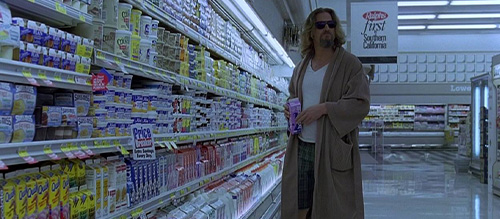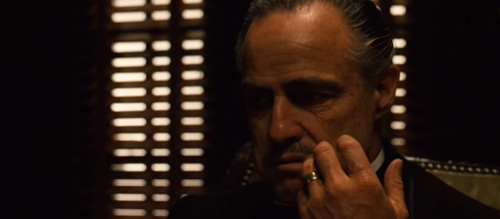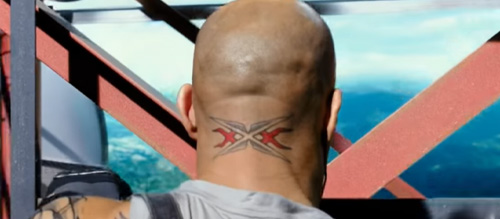5 More of the Best Character Introductions in Movie History
3. The Dude
The Big Lebowski (1998)
Fans of Western B-movies recognize the song “Tumbling Tumbleweeds” from the Gene Autrey crime film of the same name. There’s no doubt that Autrey was the kind of man for his time and place. The clean-cut, honest Singing Cowboy killed at the box office and was one of the most popular stars at the beginning of the sound era.
“Tumbling Tumbleweeds” returned to the silver screen in The Big Lebowski, encapsulating the character of the Dude with the lyrics:
“Cares of the past are behind
Nowhere to go, but I’ll find
Just where the trail will wind
Drifting along with the tumblin’ tumbleweeds”
While the song plays, Sam Elliot gives a long-winded narration and exposition that couldn’t fit better with the tone of the film. He describes The Dude as someone perfect for early-90s Los Angeles as he slowly loses his train of thought. Why does The Dude fit in so well? Because he embodies a jaded, anti-authority attitude of a generation tired of war (Elliot notes this is about the time of the Gulf War). He doesn’t like conflict and wants to go with the flow, drifting along like the tumbleweeds.
The Dude first arrives on screen after a cut to a grocery store. He’s wearing a t-shirt, shorts, flip flops, a bathrobe and sunglasses, and he’s looking to buy half-and-half for white russians. The camera pulls in as he selects a carton, opens it and takes a whiff. When it cuts to him writing a $0.69 check for the carton, he has half-and-half in his mustache. He pauses to watch George Bush say that the aggression against Kuwait will not stand, a phrase he’ll co-opt later in the film, and then jogs up to his home as the final lines of “Tumbling Tumbleweeds” plays.
While his clothes are legendary, The Dude’s character is best seen in the act of writing out the check. The Bush speech he watches happened August 5, 1990, and The Dude’s check is dated “Sept. 11, 91”. So not only is he writing a check for what amounts to pocket change for most Americans, he’s postdating it over a full year later. This is pure, distilled Dude, and a big change from the kind of character that led movies back in 1935.
Recommended for you: the other entries into the 5 Best Character Introductions series
4. Vito Corleone
The Godfather (1972)
Don Vito Corleone is the ideal anti-hero. He values his family, tradition and honor; things that are seen as positives in society. It’s so much easier to sympathize with an ultimately heinous, murderous gangster with such positive attributes, topped off with a calm demeanor and respectful bluntness. Vito is comfortable and in control no matter the setting. All of these traits are successfully demonstrated in the opening scene of The Godfather.
As the trumpet fades, the audience is greeted by a black screen, hearing a single line before cutting. Bonasera’s words, “I believe in America”, draw an immediate distinction between an “American” way of life, one of conformity and greed, and Vito’s Italian tradition.
The first shot shows Bonasera’s face from Vito’s perspective as the former tells The Godfather of the tragedy that befell his daughter. It begins on a closeup of his face and slowly zooms out. Vito first appears in the frame as Bonasera begins to cry. The Don looms large in the frame, and calmly motions for a drink to be given to Bonasera before sitting still again, another contrast with the more animated Bonasera. The drink illustrates an assertion of authority as well as compassion for the crying man who cares for his daughter.
His responses to Bonasera fleshes out his worldview and expectations for his friends and family, but his 2.5 minutes of silence in a single take say as much as the words do about Vito’s values and qualities. Coppola, Brando, Corsitto (Bonasera) and Gordon Willis (cinematographer) came together to create something truly remarkable and undoubtedly great.
5. Xander Cage
XXX: Return of Xander Cage (2017)
“We need someone who can walk into a tornado and come out the other side like it was a damn gentle breeze.” – Jane Marke, shortly before Xander Cage’s first appearance 15 minutes into xXx: Return of Xander Cage.
While it’s the third movie in the trilogy, Return of Xander Cage was released 15 years after the original and 12 years after the sequel starring Ice Cube, making it a reintroduction of its beloved hero a necessary element of the film’s presentation.
In the universe of xXx, there’s only one word to describe its protagonist: badass.
In the hero’s long-awaited first scene, Xander climbs a tower in the Dominican Republic with a DEFCON 1 countdown showing that he has a limited amount of time to complete his mission. After doing what he needs to do on the tower, men begin to yell below that he must come down and surrender himself. Rather than do that, Xander puts on a pair of skis, jumps from the tower, flips off the guards and begins to ski down the rocky, dirt-covered terrain. He gets to the bottom where a band of adoring children give him his longboard, which he rides the rest of the way to a village. The absurdity of this idea is only matched by its endgame: getting a soccer game on TV for the citizens.
Hundreds of people cheer and a woman drags him to bed.
This introduction acts as preperation for Xander’s conflict-free journey. He is beloved by everyone and is frequently rewarded with carnal pleasure for his daring deeds. This sequence’s placement in the film, the sloppy shooting that unveils an obvious stunt double, and the unwillingness to show Xander failing are all small parts of what make this movie, and character, ridiculously good… albeit in a mostly bad way – so bad it’s good! If the goal was to make a stupid scene for a boring, unlikable character, the film succeeds and then some.
[DISPLAY_ULTIMATE_SOCIAL_ICONS]




